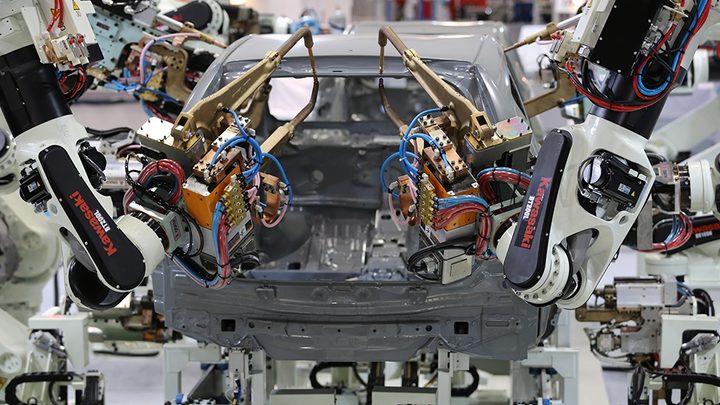
自給自足的自動化創新
As one of the first industries to wholeheartedly adopt automation, the automotive manufacturing sector has long benefited from successive improvements in robotics technology. Over time, robots used in automotive manufacturing applications have become smaller, more precise and more multi-functional than their predecessors, making them indispensable in the production process. Today, rising costs associated with next-generation automotive materials, skilled labor and safety systems coexist alongside a need for manufacturing equipment to accommodate product changeovers. This makes a clear, compelling case for cost-effective flexible automation solutions at every step of the automotive manufacturing process – from parts, press and paint shops to assembly and inspection.
適用於所有汽車製造應用的靈活自動化
From tending stamping machines and manning body and frame assembly stations to applying precise coats of paint and sealing sensitive finished components, automakers and parts manufacturers count on nimble, adaptable automotive robots to enhance productivity and quality. Kawasaki robots can effectively execute dashboard assembly, engine, transmission and crankshaft handling and waterjet cutting for carpeting and other soft materials. Meanwhile, key improvements in sensing and calibration technology make our robots ideal for welding – including arc, spot and friction spot joining – car and truck bodies as well as palletizing and crating parts and materials for delivery.
對於汽車原始設備製造商和零部件供應商,川崎機器人提供了功能、靈活性和投資效率的優化優化,以加快生產時間表並提高質量。
應用

組裝
將多個零件組合起來製造零件或產品的過程,組裝在各種製造業中進行,包括機械、電子和電氣行業。
組裝涵蓋各種任務,包括小型精密零件和大型重型工件的組裝。

物料搬運
將材料、零件和產品從一個地方移動到另一個地方的過程,材料處理幾乎在所有行業中進行,而不僅僅是在製造業中。
對於物料搬運,工業機器人最常用於各種用途,包括小零件的高速運輸和人類無法搬運的重物的搬運。

塗裝
塗裝是將油漆塗在產品表面,形成塗膜或面漆的過程。
由於大多數油漆材料具有高度揮發性,因此該過程使用防爆機器人和塗裝設備。

封裝/塗膠
密封是應用密封劑或黏合劑以增強氣密性並填充材料之間空間的過程。
許多產品都需要進行密封,例如乘用車和家用電器。

材料去除
打磨去毛邊是去除鑄鍛件表面以及焊接後表面突出毛邊的製程。
涉及用磨床刮掉毛刺,這個過程可能很髒、危險且要求很高,而機器人可以在其中發揮重要作用。

弧焊
拱形焊接是一種利用電弧放電連接金屬材料的焊接方法,廣泛應用於機械、金屬和汽車行業。機器人和電弧焊接機用於在熔化材料的同時將材料連接起來。

點焊
點焊,也稱為電阻焊,是通過電極棒施加電流並用電阻熱將它們熔化來焊接兩種基材的過程。點焊是汽車車身鋼板焊接的常用方法,以至於汽車行業大量使用機器人。